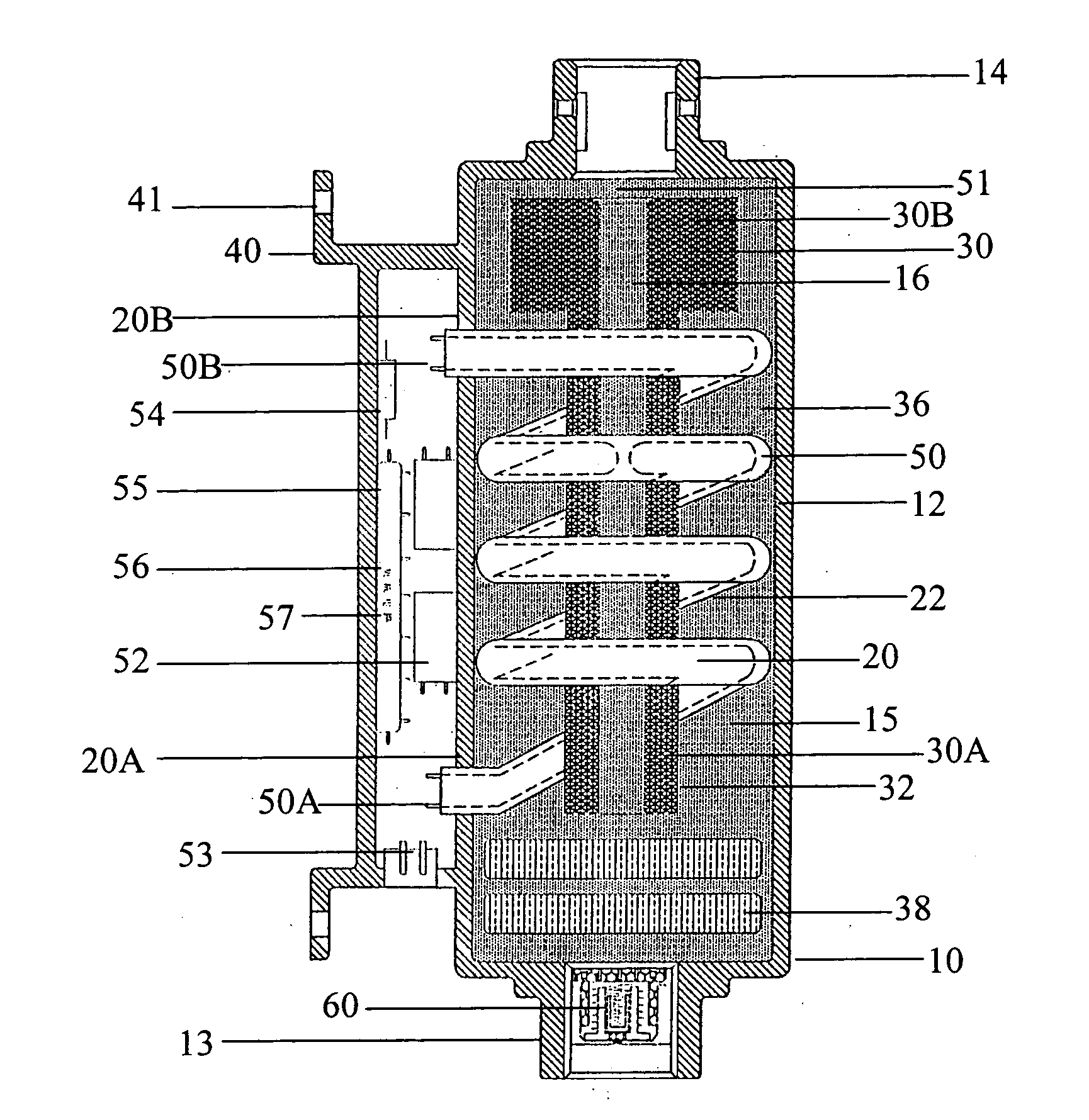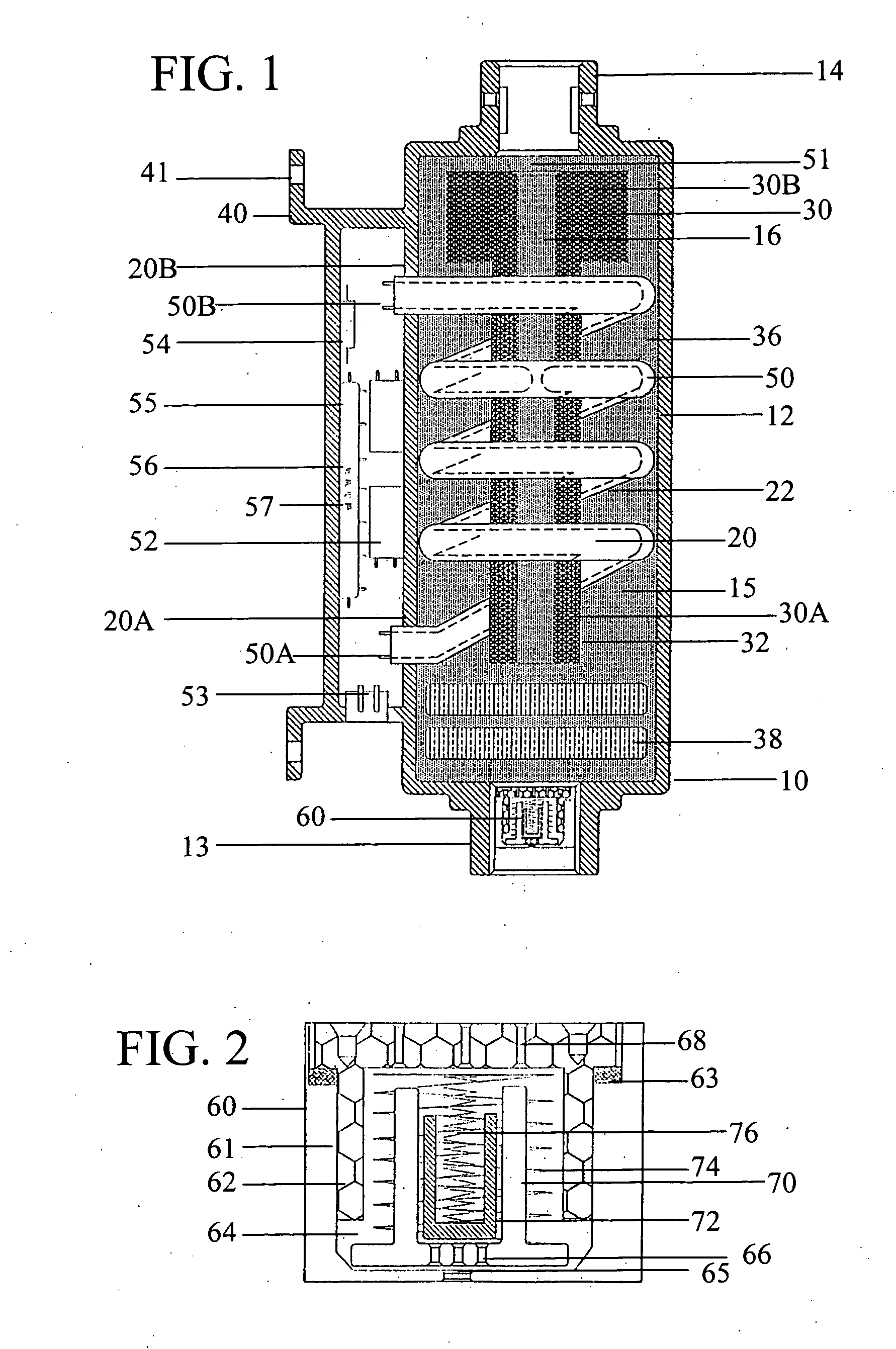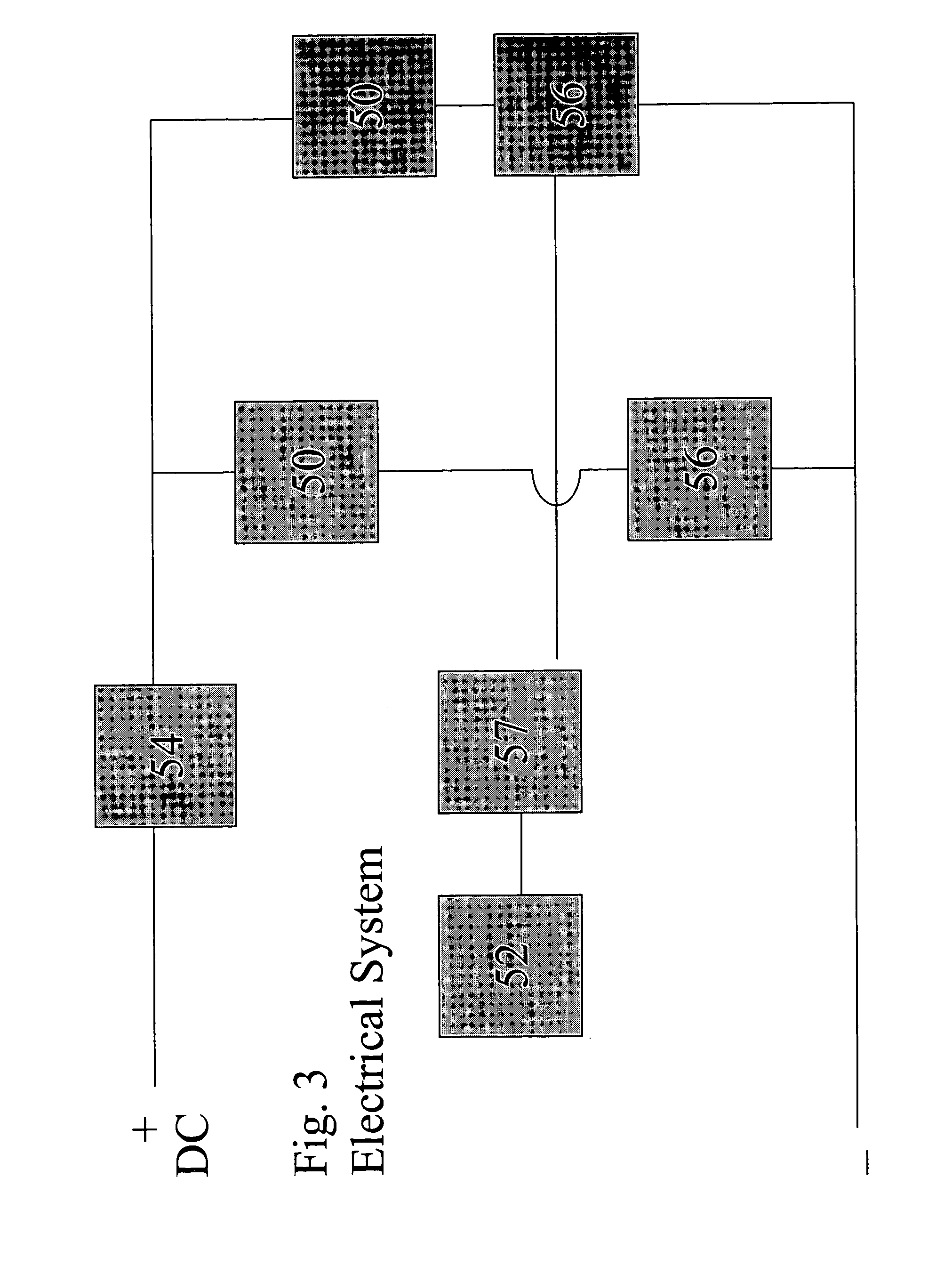Fuel saving heater for internal combustion engine
a technology for internal combustion engines and heaters, which is applied in the direction of machines/engines, combustion air/fuel air treatment, and feed systems, etc. it can solve the problems of increasing the risk of fire or explosion, reducing the efficiency of fuel consumption, and reducing the risk of fuel overheating, so as to improve the quality of fuel and improve the temperature stability. , the effect of preventing the fuel from overheating
- Summary
- Abstract
- Description
- Claims
- Application Information
AI Technical Summary
Benefits of technology
Problems solved by technology
Method used
Image
Examples
Embodiment Construction
[0017] With particular reference to FIG. 1, a fuel saving device 10 in accordance with the preferred embodiment of the present invention comprises of an elongated housing means 12 with an inlet end 13 at its one side and an outlet end 14 at its other side, and a holding base 40 beneath it to be installed on any convenient position in an automobile preferably as close to an internal combustion engine (not shown) as possible. The housing means 12 further defines an inner chamber 15 along with the inlet end 13 and the outlet end 14 for establishing a flow of the fuel from a fuel tank (not shown) to the engine with the device 10 in between. There is an infrared annular member 30 disposed in the center portion of the inner chamber 15 between the inlet end 13 and the outlet end 14. The annular member 30 elongated in shape can be divided into two different parts. The large part is in small dimension at size 30A with its one side situated near the inlet end 13. The small part is in large di...
PUM
 Login to View More
Login to View More Abstract
Description
Claims
Application Information
 Login to View More
Login to View More - R&D
- Intellectual Property
- Life Sciences
- Materials
- Tech Scout
- Unparalleled Data Quality
- Higher Quality Content
- 60% Fewer Hallucinations
Browse by: Latest US Patents, China's latest patents, Technical Efficacy Thesaurus, Application Domain, Technology Topic, Popular Technical Reports.
© 2025 PatSnap. All rights reserved.Legal|Privacy policy|Modern Slavery Act Transparency Statement|Sitemap|About US| Contact US: help@patsnap.com



